Author: Bailey B.
What would happen if you took the most versatile rifle platform and mashed it together with your favorite pistol caliber ammunition? Well, you get the Pistol Caliber Carbine, or PCC for short. A jack of, well, a decent amount of trades, PCC’s are perfect for plinking, modular with respective handguns, and quite handy due to their overall shorter length. These points, as well as many others that will be touched on later on, add up to a pretty well rounded out firearm platform if you ask me.
I recently had the pleasure of building a PCC of my own for the first time, and to say that I learned a lot might be an understatement. Choosing parts for a build is kind of tricky. It is definitely not as easy as picking parts for a standard AR-15, but once you understand a little bit about how they work and how the parts interact with each other you’ll see the light at the end of the tunnel. To some it may sound like a daunting process, but take the plunge! It is well worth it to add one to your collection.
My Build
I wanted to build a gun that was really unique and one of a kind for a change. Something that I could really call my own. I think it’s pretty neat at least, and I’ve got some amazing reactions pulling it out at the range! Anyway, here’s my parts list. Feel free to take some inspiration from it, and change up your specs to make your AR-15 PCC your own!

- Sharp’s Bros “The Jack 9” lower receiver (I’ve had my eye on it for a long time, saw it at my local gun store and HAD to have it. Glock magazine compatible)
- SB Tactical “HBPDW” brace (These are the go-to guys for pistol braces)
- Ghost Firearms Elite 7.5” upper (Perfectly fits the Tyrant CNC foregrip, keep handguard length in mind if you want to add an angled foregrip)
- Angstadt Arms 9mm AR-15 BCG
- Tyrant CNC pistol grip and angled foregrip
- PSA mil spec trigger and lower parts kit
- Phase 5 EBRv3 extended bolt catch
- Strike Industries anodized takedown pins
- Radian Raptor Competitive charging handle (Now that I have a Radian on this, I’m tempted to order one for all of my rifles. Seriously, try one!)
Why Should You Own a PCC?
First off, they’re an absolute blast to shoot. With the added weight of using a rifle platform, firing pistol caliber ammunition is as smooth as butter. You’ll be laying dingers down on your targets shot after shot. Also, since they are easy on the shoulder, a PCC might also be a great option to give to somebody who is new to shooting to introduce them to your passion.
Second, and this is a big one, they are fantastic options for self defense. PCC’s are typically more compact than an AR-15, so maneuvering them around doorways and obstacles in your house is less of a problem. You also have the added benefit of not risking a .223 round fly through your walls and into your neighbor’s 75” flat screen TV. The humble 9mm and .45 ACP – contrary to what the people who carry .45 may say – won’t be posing a risk to the people who live around you. I’ve also seen that some people keep one in their vehicle, called a “truck gun”. No, you don’t have to drive a truck to do this. You can easily stow one in the back of your beloved Honda Accord.
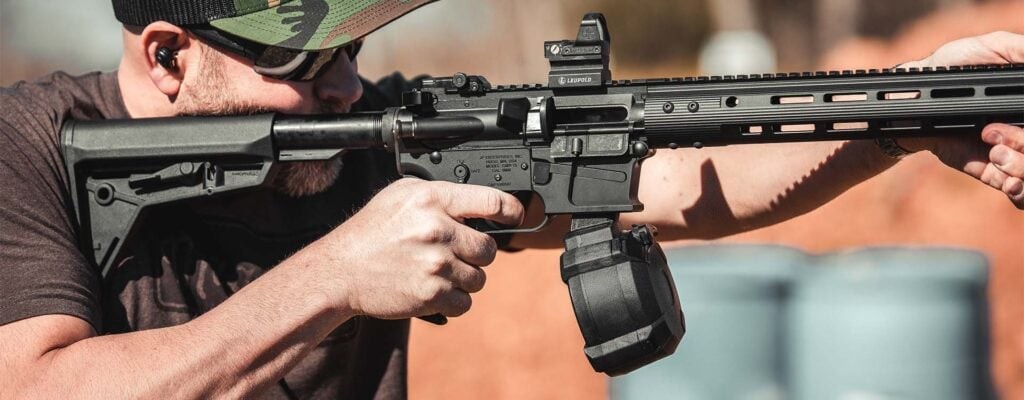
Ammunition, ammunition. If you already have a pistol, and you’ve (hopefully) been stocking up on ammo, then you already have ammunition for a PCC. This also applies to Glock magazines in particular, a lot of 9mm PCC uppers accept glock magazines. Now that’s what I call modular. If you want to feel like John Wick, shoot a couple shots out of your Glock, take the mag out, stick it in your PCC and let her rip.
Last, but certainly not least, they’re fun to shoot. But I may have already covered that.
Getting Started With Your Build
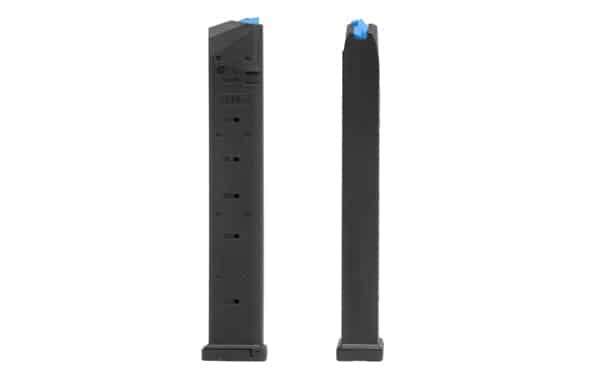
First thing’s first, choose a caliber. The most common PCC calibers are 9mm and .45 ACP. With many 9mm builds, you can choose from a variety of magazines (Glock and Colt patterns are most common) with higher magazine capacities, and all of the ballistic pros (and cons) of 9mm. With .45 ACP, your magazine and lower receiver options are more limited, and you get the ballistic pros (and cons) of .45 ACP. If you want to have easy access to magazines that can hold 30 rounds or more, 9mm might be for you. If you don’t want to shoot twice, choose .45 ACP. Jokes aside, it all comes down to personal preference, both are fantastic options. Choose what works for you, and what you actually want to make room for in your safe.
Choosing a Lower Receiver
Once you’ve chosen a caliber, it’s time to get started looking for a lower receiver. Make sure you read the specs of the lowers you decide to look at, looking specifically for what magazine platform they accept as well as whether or not they have last round bolt hold open, often just called LRBHO.
LRBHO is the system that locks your BCG back after the last round in the magazine is discharged. It might be something we take for granted, every single AR-15 has it, so if not having that is a deal breaker for you then definitely make sure you verify that the lower you want includes it.
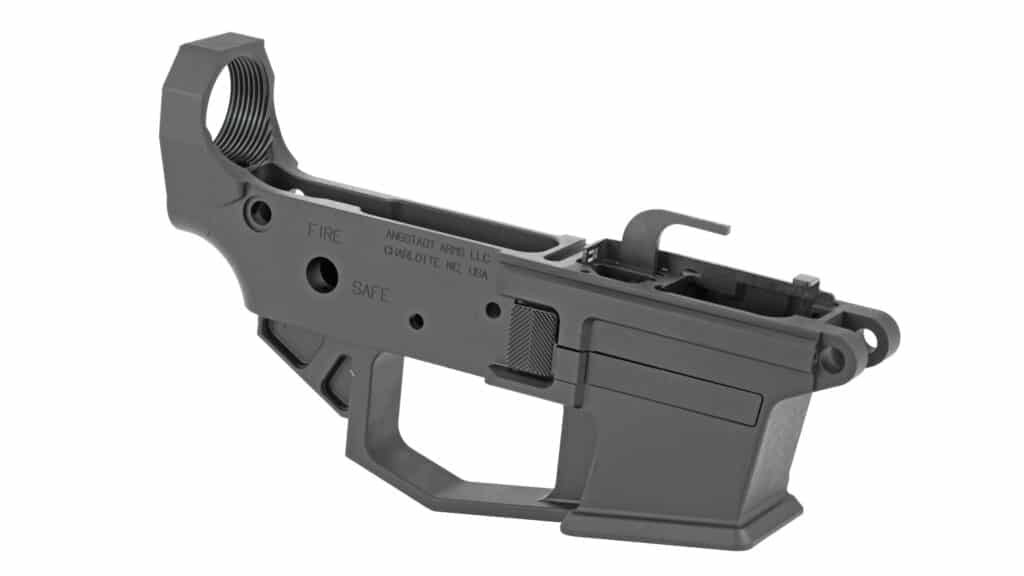
One VERY important takeaway though is that LRBHO can either be integrated into your lower receiver OR your upper receiver. If you decide to order a lower with LRBHO, absolutely DO NOT order an upper that also has LRBHO. The systems may interfere with each other and you may not even be able to fit the upper and lower together at all, or worse case, a catastrophic malfunction could occur. Not good.
Lower receiver parts are basically all mil-spec, so go ahead and order your favorite lower parts. There are a few possible issues with triggers that will be covered later though, so don’t confirm your order just yet.
Choosing a Barrel Length
9mm AR’s are not gas operated like their larger AR-15 cousins. The vast majority of them are straight blowback, meaning the actual pressure of the gasses from firing are what cycle the bolt. Thanks to the simple straight blowback system (and the fact that, in terms of ballistics, 9mm and .45 ACP aren’t very picky about barrel lengths) barrel length is completely up to you.
Don’t want to deal with pistol braces and ATF nonsense? A standard 16” barrel might be for you. Or you could go for a shorter, handier 4.5” barrel, if you’re feeling spicy. The most common barrel lengths are around the 9” range, giving you plenty of handguard space as well as an amazing center of gravity that sits at or just past the lower receiver.
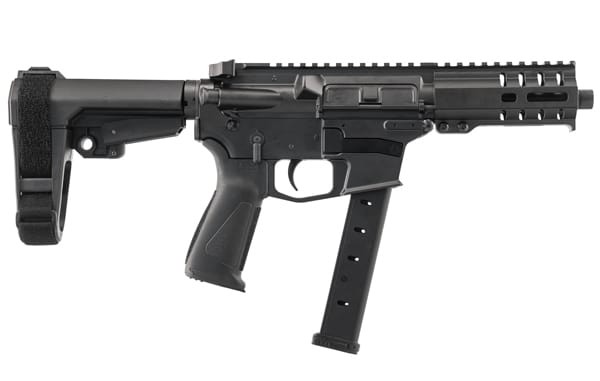
Another VERY important takeaway is that, if you decide on a barrel length shorter than 16”, make sure you comply with the ATF’s lovely and oh-so straight-forward definitions of what they consider to be a pistol. It’s much easier to build a pistol than to have to register an SBR, and all of the headaches that go along with that. I will cover some of the ATF’s guidelines and rulings in the following section.
ATF Technicalities
Quick disclaimer before we get into some of the details. The following section should not be taken as legal advice or counsel. This is simply a quick breakdown of how some of the ATF’s rulings affect AR pistols and PCCs. These rules can change, and by all accounts, more changes are on the horizon. I highly recommend researching the regulations yourself and becoming more familiar with them prior to building a PCC to protect yourself legally.
With that out of the way, this section only applies to you if you want a barrel length shorter than 16 inches. Which, let’s face it, is kind of the point of a PCC or subgun. So pay attention! This is very important.
The ATF dictates that you must have a “pistol brace” or a “stabilizer”, not a buttstock. What is a pistol brace you ask? Good question, the ATF has a solid answer for you… or not. The definition has changed multiple times in the past 4 years. As of this writing in May 2022, a pistol brace or stabilizer is defined as “an accessory that attaches to the rear of the gun and allows for the firearm to be fired one handed”. An interesting caveat that goes along with this regulation is the subject of shouldering an AR pistol. Yes, you can legally do it. According to the ATF, you can “occasionally or sporadically” shoulder the pistol. But that’s a whole other topic that has been covered extensively.
Another important regulation that you need to be aware of is foregrips. You absolutely CANNOT put a vertical foregrip on any AR pistol. There needs to be a “noticeable” angle to the foregrip, or else you have yourself an unregistered SBR. Sorry, vertical foregrip lovers.
Length of pull is important too. Length of pull is the distance from the end of the pistol brace to the trigger. According to the ATF, the distance from the end of the pistol brace, fully extended, to the trigger can be no longer than 13.5”. So take this into consideration when choosing a pistol brace and plan accordingly.
Now that ATF regulation class is over, let’s get back to the fun stuff.
The BCG, Recoil Spring, Buffer, and Trigger
In a straight blowback system, the only things that control how the bolt cycles are the weight of the bolt, the weight of the buffer, the stiffness of the recoil spring, and the stiffness of the hammer spring. A system with weights that are too heavy may not cycle at all, or have failures to feed, failures to extract, etc. A system that is too light could lead to poor ballistics, inaccurate firing, or even injury to yourself or damage to the firearm.
A quick note, BCG’s in PCC’s typically have a weighted buffer inside them, giving them a couple extra ounces. Choose a weight that you determine your build will need.
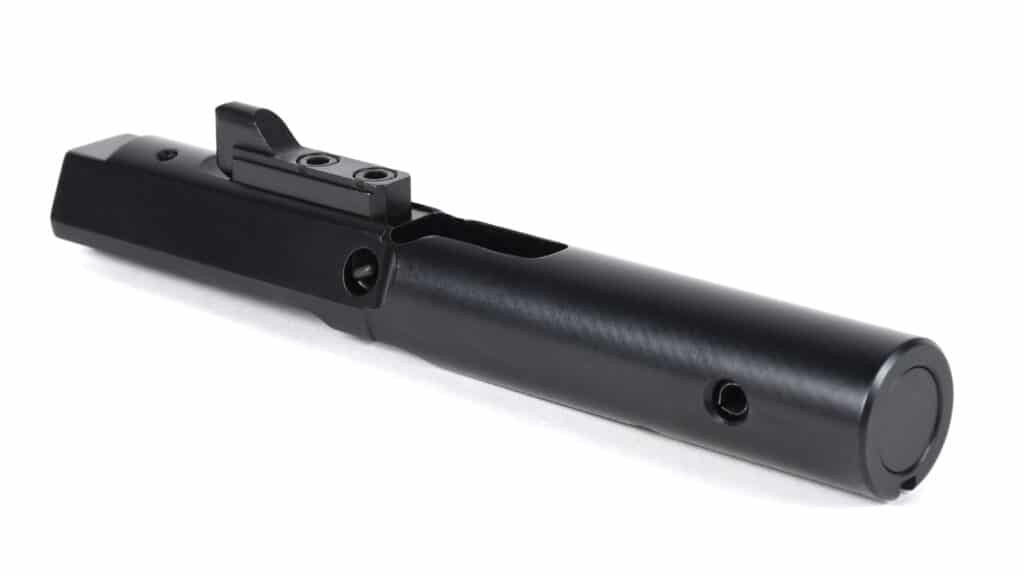
These four parts have a delicate relationship within the straight blowback system of a PCC. Depending on which one is more important to you, the other three parts will have to be carefully selected to work with each other.
I highly recommend starting with choosing the trigger first, and basing the other three parts around the weight of the trigger. You won’t want to choose a heavy fire control group for your build, as a stiffer hammer spring may cause problems for the BCG during cycling. An easy rule to remember is the lower the weight of the trigger pull, the higher weight you want your BCG, buffer, and recoil spring to be and vice versa.
A safe bet would be to just choose a mil spec trigger and order whatever other parts you want, as buffer weights and recoil springs can easily be swapped out later if you are having issues. If issues persist and you can’t figure it out, or you want to be safe and double check before you buy, the Reddit community r/AR9 is a fantastic place to ask any questions you may have. The community is also full of posts detailing builds, and what has worked for other people in regards to the parts covered in this section.
Furniture, Accessories, Sights, Etc.
Feel free to pick out your favorite furniture, your most beloved accessories (remember, NO vertical foregrips on AR pistols), and another one of those sights that you are so fond of. All of these parts are mil spec, so you can slap whatever you are accustomed to onto your brand new PCC.
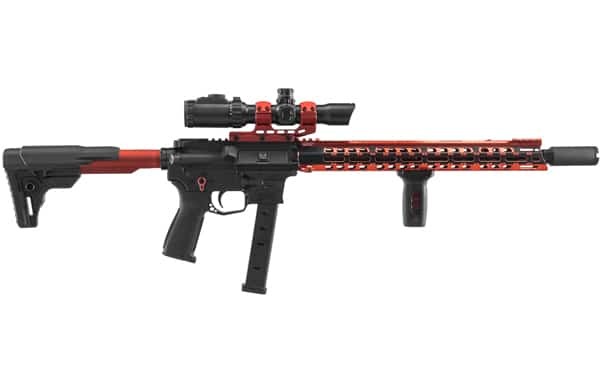
Parting Words
PCC’s are super fun to shoot, especially with pistol ammunition coming down in price and steadily becoming more available in stores.
Select what caliber you want and plan your build accordingly. And follow the ATF’s regulations if you want a barrel shorter than 16 inches! Yes, PCC’s can be finicky in regards to the trigger, BCG, and other parts, but with a bit of research and a hint of luck you will have a wonderfully reliable, fun, and practical firearm. Enjoy!
One Last Tip
If there’s anyone that knows the AR-15 platform, it’s the US military. As a special offer for our readers, you can get the Official US Army Manual for AR-15/M4/M16 right now – for free. Click here to snag a copy.


